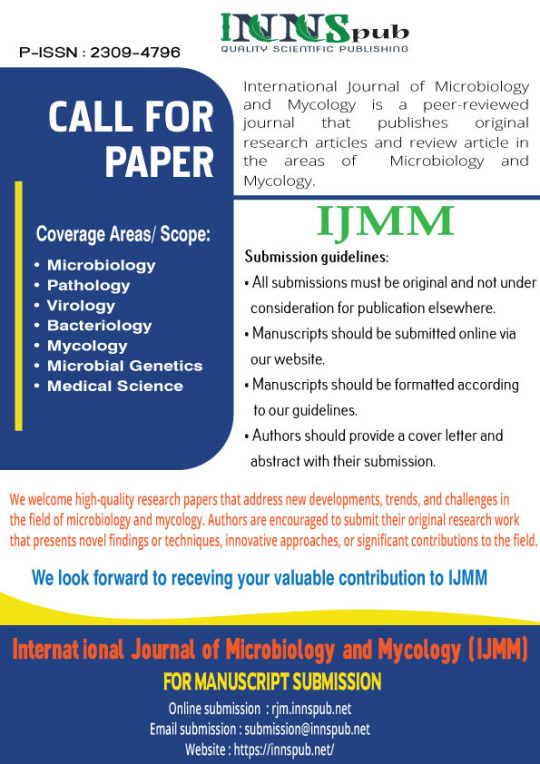#Hi Candida identification kit
Explore tagged Tumblr posts
Link
1 note
·
View note
Text
Candida Species Identification in Resource-Limited Clinical Settings

Abstract
Candidiasis is worldwide in distribution, and is one of the common fungal diseases isolated in man, which affects the skin, mucosa and various internal organs. It is caused by various species of Candida, which is a yeast-like fungi that produce pseudohyphae. Speciation helps to understand the epidemiology of Candida species particularly, the source and mode of transmission of resistant pathogens. Various commercially available chromogenic agar medium has been studied and evaluated for presumptive identification of various species of Candida. The present study was conducted for a duration of 12 months from the month of July 2019 to the month of July 2020, in the Department of Microbiology at a medical college in Siddipet, with prior approval of institutional ethics committee. The present study was aimed at isolating and identifying the Candida species from various clinical samples by using chromogenic media for easy and rapid speciation in addition to the time consuming and labour-intensive conventional methods. Among the Candida isolates the most frequently isolated species was found to be Candida albicans. In the present study non-albicans Candida (NAC) (50.91%) had predominance over Candida albicans (49.09%). In our study, an increase in the number of cases caused by NAC was noted though the most common species isolated was Candida albicans. CHROMagar was found to be a simple, easy and also a rapid method for Candida species detection. It considerably reduced the turn-around-time.

Introduction
Candidiasis is worldwide in distribution, and is one of the common fungal diseases isolated in man, which affects the skin, mucosa and various internal organs. It is caused by various species of Candida, which is a yeast-like fungi that produce pseudohyphae. (Apurba S Sastry, Essentials of Medical Microbiology, 3rd Ed) The genus Candida belongs to Phylum: Imperfectii, the Order Moniliales and family Cryptococcaceae. (Chander J. Candidiasis. In: A textbook of Medical Mycology, 3rd Ed.) Candida is a human commensal, but it becomes an opportunistic pathogen because of any pre-disposing factors which impair, immune response to the microorganisms. eg: AIDS, immunosuppressive chemotherapy, metabolic diseases, or cause an imbalance, in favour of fungal microflora e.g., Antibiotics, disrupt the integrity of the integument e.g., intravenous catheters, surgery. The source of infection is mostly endogenous, but in some cases, Candida can be introduced by exogenous sources too (Esther Segal and Daniel Elad. Candidiasis. Topley and Wilson’s Microbiology and Microbial Infections. Medical Mycology. 10thEd.) Fungal infections, especially those caused by Candida species, has significantly increased, in the past decade, in immuno- compromised patients. (Dharmeswari T., 2014)
The conventional method of fungal culture on SDA is tedious and often isolation and detection are difficult in mixed cultures. This led to the use of many chromogenic agar which enables the detection based on colour of the colony. (Baradkar VP, 2010; Moyer GJ, 1995; Murray MP, 2005; Louwagie B, 1995; Odds FC, 1994; Pfaller MA, 1996; Raut SH, 2009). Speciation of various species of Candida is based on the colour of the colony along with other characteristic. This differentiation is facilitated by the presence of chromogenic substrates that produce different pigmentations based on specific enzymes produced by the specific candida species. (Lynn L., 2003)
CHROMagar Candida is of great use in clinical specimens suspected to contain yeast and hence can be used as a medium for primary isolation even in a resource limited setting as it requires less expertise. Moreover, it can act as a differential medium even if candida is isolated from other media like SDA or blood agar. (Odds FC, 1994) Though the biggest limitation of the medium could be the cost but the advantage in reducing the turn-around time can still be of great significance when compared to various conventional methods of identification.
Speciation helps to understand the epidemiology of Candida species particularly the source and mode of transmission of resistant pathogens. (Shaheen M.A, 2006) Conventional methods for speciation are more time consuming and laborious, therefore, in the present study CHROMagar has been used for rapid identification of various species of Candida.
The present study was aimed at isolating and identifying various Candida species from clinical samples by using chromogenic media for easy and rapid speciation in addition to the time consuming and labour-intensive conventional methods.
Source : Phenotypic identification of Candida species from various clinical samples in a resource limited setting
1 note
·
View note